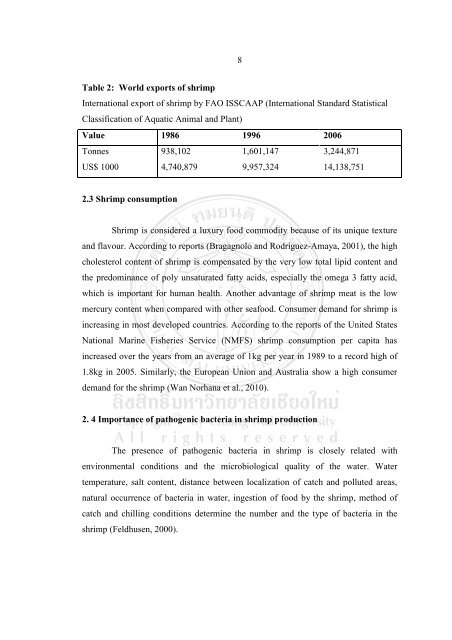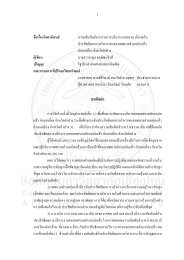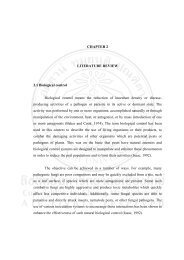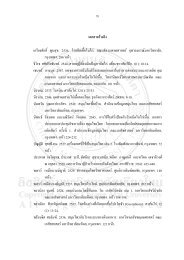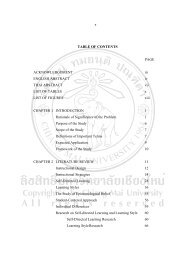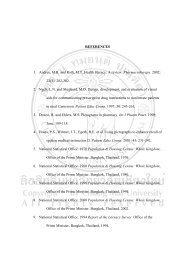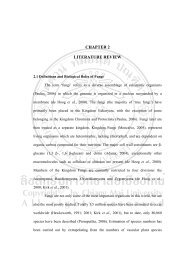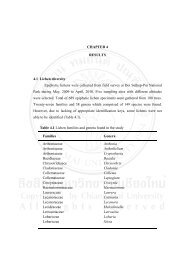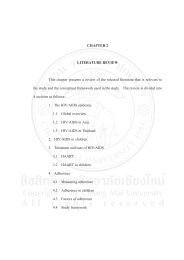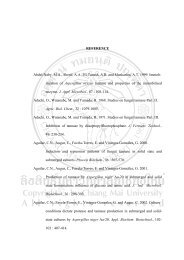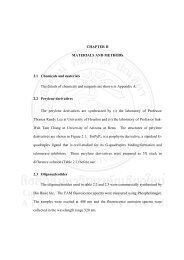prevalence and molecular characteristics of vibrio species in pre ...
prevalence and molecular characteristics of vibrio species in pre ...
prevalence and molecular characteristics of vibrio species in pre ...
You also want an ePaper? Increase the reach of your titles
YUMPU automatically turns print PDFs into web optimized ePapers that Google loves.
Table 2: World exports <strong>of</strong> shrimp<br />
International export <strong>of</strong> shrimp by FAO ISSCAAP (International St<strong>and</strong>ard Statistical<br />
Classification <strong>of</strong> Aquatic Animal <strong>and</strong> Plant)<br />
Value 1986 1996 2006<br />
Tonnes 938,102 1,601,147 3,244,871<br />
US$ 1000 4,740,879 9,957,324 14,138,751<br />
2.3 Shrimp consumption<br />
8<br />
Shrimp is considered a luxury food commodity because <strong>of</strong> its unique texture<br />
<strong>and</strong> flavour. Accord<strong>in</strong>g to reports (Bragagnolo <strong>and</strong> Rodriguez-Amaya, 2001), the high<br />
cholesterol content <strong>of</strong> shrimp is compensated by the very low total lipid content <strong>and</strong><br />
the <strong>pre</strong>dom<strong>in</strong>ance <strong>of</strong> poly unsaturated fatty acids, especially the omega 3 fatty acid,<br />
which is important for human health. Another advantage <strong>of</strong> shrimp meat is the low<br />
mercury content when compared with other seafood. Consumer dem<strong>and</strong> for shrimp is<br />
<strong>in</strong>creas<strong>in</strong>g <strong>in</strong> most developed countries. Accord<strong>in</strong>g to the reports <strong>of</strong> the United States<br />
National Mar<strong>in</strong>e Fisheries Service (NMFS) shrimp consumption per capita has<br />
<strong>in</strong>creased over the years from an average <strong>of</strong> 1kg per year <strong>in</strong> 1989 to a record high <strong>of</strong><br />
1.8kg <strong>in</strong> 2005. Similarly, the European Union <strong>and</strong> Australia show a high consumer<br />
dem<strong>and</strong> for the shrimp (Wan Norhana et al., 2010).<br />
2. 4 Importance <strong>of</strong> pathogenic bacteria <strong>in</strong> shrimp production<br />
The <strong>pre</strong>sence <strong>of</strong> pathogenic bacteria <strong>in</strong> shrimp is closely related with<br />
environmental conditions <strong>and</strong> the microbiological quality <strong>of</strong> the water. Water<br />
temperature, salt content, distance between localization <strong>of</strong> catch <strong>and</strong> polluted areas,<br />
natural occurrence <strong>of</strong> bacteria <strong>in</strong> water, <strong>in</strong>gestion <strong>of</strong> food by the shrimp, method <strong>of</strong><br />
catch <strong>and</strong> chill<strong>in</strong>g conditions determ<strong>in</strong>e the number <strong>and</strong> the type <strong>of</strong> bacteria <strong>in</strong> the<br />
shrimp (Feldhusen, 2000).


